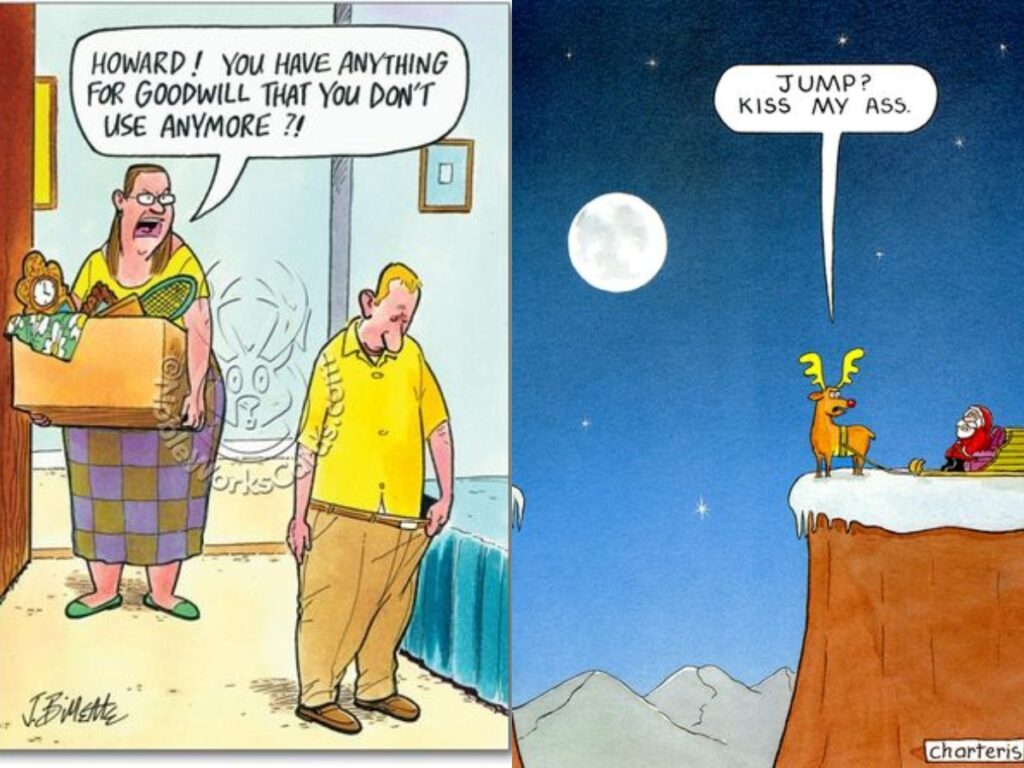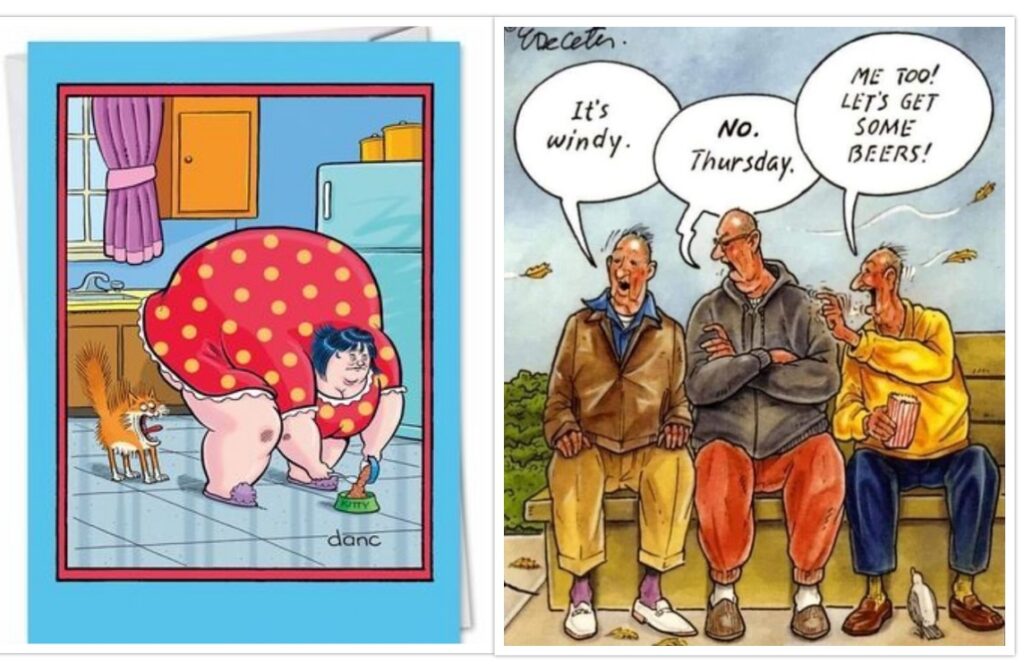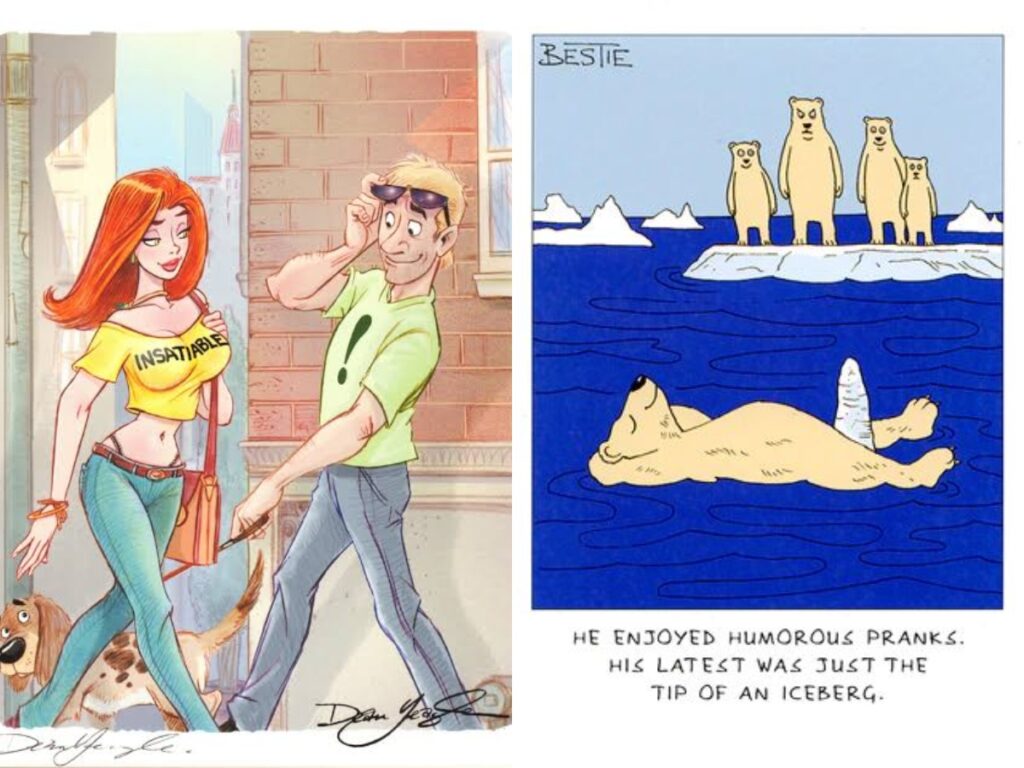A Reflection of Society: Free Range Comics
Through his comics, Whitehead also offers subtle commentary on societal norms and behaviors. By exaggerating the mundane, Free Range comics highlight the absurdity of certain social conventions, inviting readers to question and laugh at the world around them. This layer of social critique adds depth to the otherwise light-hearted strip.
Universal Appeal: Free Range Comics
The universal appeal of Free Range comics lies in their ability to transcend age and culture. Whitehead’s humor is accessible to everyone, making it a beloved feature in newspapers and online platforms alike. The simplicity of the drawings coupled with the complexity of the themes ensures that each strip is both thought-provoking and entertaining.
1

In this Free Range comic, a group of cowboys on horses are on top of a cliff. They are talking to a wise-looking man sitting on the cliff. One cowboy says they didn’t have any luck finding fugitive outlaws, so they decided to search for the meaning of life instead. It’s a funny situation because searching for the meaning of life is a big and deep question, much different than looking for outlaws. The wise man seems calm and ready to answer their questions, just like in stories where wise people live in high places, away from the rest of the world. This comic makes us laugh by showing how people can switch from a normal task to thinking about life’s big questions.
2
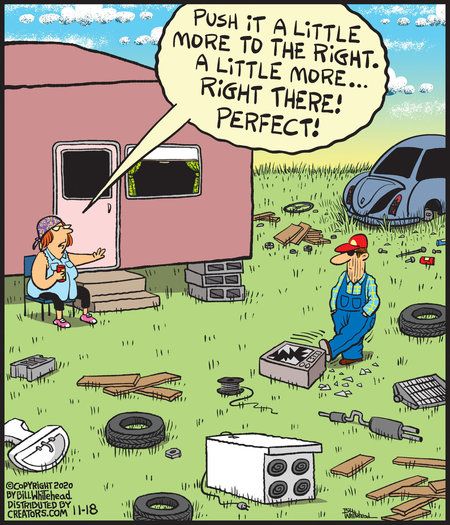
In this Free Range comic, there are two people outside a pink trailer. One person is sitting in a chair pointing, and the other person, wearing blue overalls, is standing near a television outside. The person sitting down is telling the other to move the TV a little more to the right, then says “a little more,” and finally says “Right there! Perfect!” They are trying to get the TV in just the right spot outside, which is funny because people usually watch TV inside their homes. The yard is messy with car parts and other things scattered around, but they are focused only on the TV. It’s a humorous picture because it’s not what you would expect someone to do with a TV, showing the Free Range comic’s way of finding humor in odd situations.
3
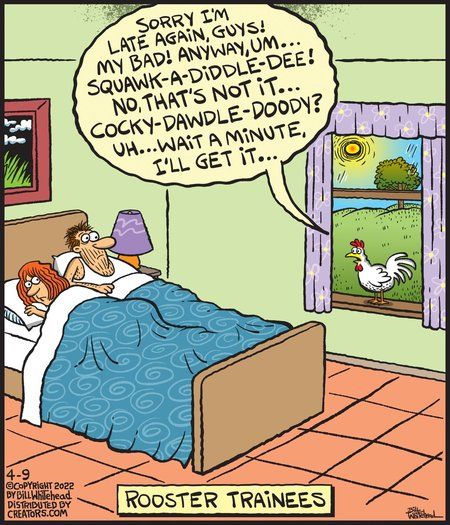
In this Free Range comic, there’s a funny picture of a rooster outside a window trying to crow in the morning. But the rooster seems to be having trouble saying the usual “cock-a-doodle-doo” sound. Instead, it’s saying all the wrong things like “squawk-a-diddle-um” and “cocky-dawdle-doodly.” Inside, a man and a woman are in bed, and it looks like they just woke up. The man is covering his ears because the rooster’s sounds are not right and probably very loud. At the bottom, it says “Rooster Trainees,” which means the rooster is still learning how to crow properly. It’s a cute and silly situation that shows even roosters might need practice to do their job. This is just like what you see in Free Range comics: everyday things turned into something to laugh about.
4
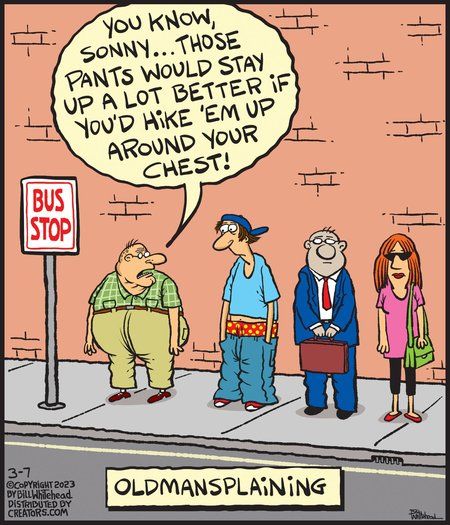
In this Free Range comic, there’s a funny situation at a bus stop. An older man is talking to a younger man with sagging pants. The older man suggests that the pants would stay up better if the younger man pulled them up to his chest. The term “Oldmansplaining” at the bottom is a play on the word “mansplaining,” where someone explains something in a way that seems to be oversimplifying or patronizing. The older man is giving advice that seems silly and outdated, which makes it humorous. The comic shows how different generations have different ideas about how to wear clothes. It’s a good example of the humor you find in Free Range comics, where everyday situations become funny.
5
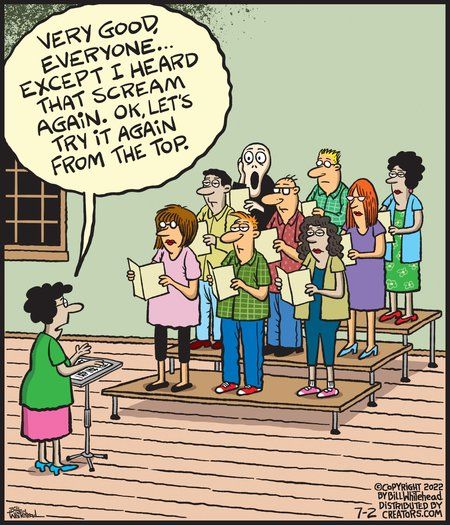
In this Free Range comic, a choir is practicing with their choir director. After singing, the director says, “Very good, everyone. Except I heard that scream again. OK, let’s try it again from the top.” It seems like someone in the choir screamed while they were singing, which is not supposed to happen, and that’s why the director wants to start over. The joke is that usually in a choir, everyone sings nicely together, so a scream is very out of place and funny. The choir members look surprised and confused about the scream. It’s another example of how Free Range comics find humor in unexpected things happening in normal situations.
6
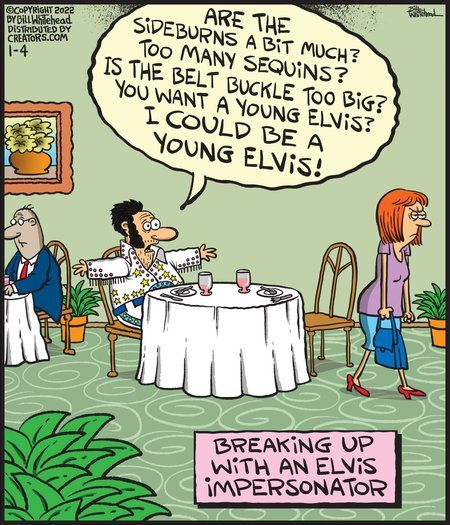
In this Free Range comic, there’s a man dressed up like Elvis Presley sitting at a restaurant table. He’s talking to a woman who is walking away from the table. He’s asking if his sideburns or the sequins on his clothes are too much, and if his belt buckle is too big. Then he says he could be a young Elvis. The joke here is that the man is an Elvis impersonator, and he’s trying to impress the woman by saying he could look like Elvis when he was young. But it seems like the woman is not impressed because she’s walking away. The title of the comic, “Breaking up with an Elvis Impersonator,” suggests that the woman was dating the Elvis look-alike and is now breaking up with him. This comic is a funny take on how impersonators try to be like famous people, which is something you often see in Free Range comics.
7
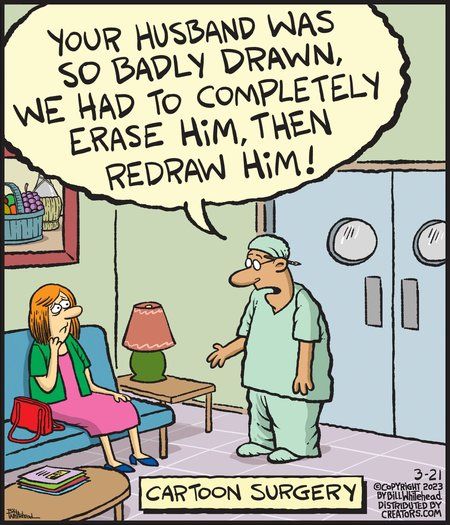
In this Free Range comic, there’s a funny situation in a hospital. A surgeon is talking to a woman sitting in the waiting room. He tells her that her husband was drawn so badly, they had to erase and then redraw him. This is a play on words because in real life, surgery has nothing to do with drawing. But since this is a cartoon, they are joking that the cartoon character (her husband) had to be redrawn because he was not drawn well the first time. It’s a humorous twist on the idea of surgery, blending the real world with the cartoon world. This kind of humor is typical in Free Range comics, where they take a serious situation and make it into something silly and lighthearted.
8
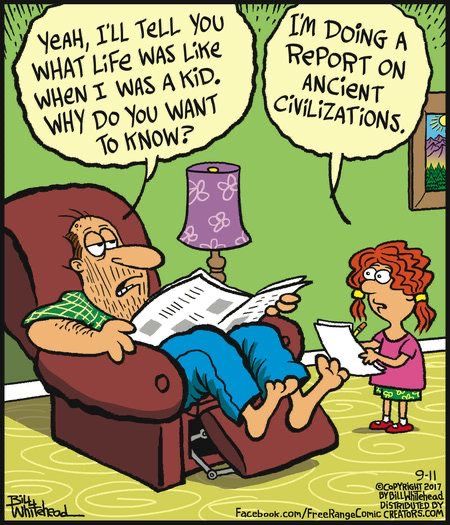
In this Free Range comic, a little girl is asking a man, who looks like he could be her dad, to tell her about life when he was a kid. The man says, “Yeah, I’ll tell you what life was like when I was a kid. Why do you want to know?” And the girl replies, “I’m doing a report on ancient civilizations.” The joke here is that the girl is comparing her dad’s childhood to ‘ancient civilizations’, which are very, very old. It’s funny because it suggests that the dad is much older than he probably is, and it’s a playful way to say that to a kid, even their parents’ childhood seems like ancient history. This type of humor is a common feature in Free Range comics, where everyday conversations are turned into something amusing.
9
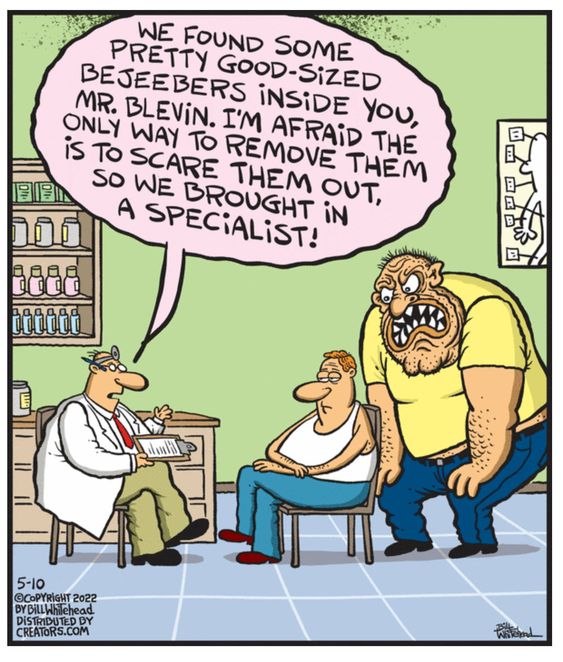
In this Free Range comic, there’s a funny scene in a doctor’s office. The doctor tells a patient, Mr. Blevin, that they found some “beejebers” inside him, which isn’t a real medical term but is used to mean something scary or bothersome. The doctor jokes that the only way to get rid of them is to scare them out. So, they brought a scary-looking specialist to frighten the “beejebers” away. The specialist looks like a big, scary monster that you might see in a movie. It’s funny because this isn’t how doctors really treat problems, but in the comic, they’re acting like it’s a normal thing to do. This comic is a great example of the humor in Free Range comics, where they take a silly idea and imagine how it would play out in the real world.
10
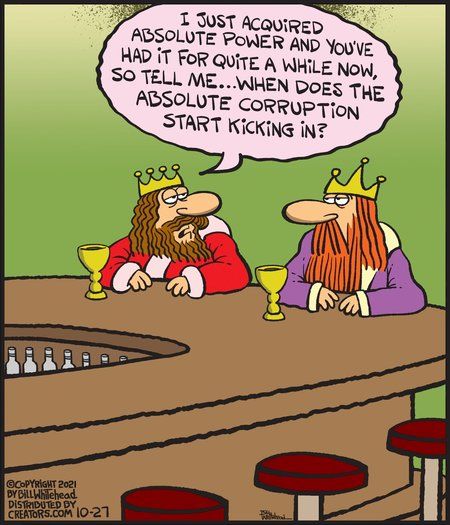
In this Free Range comic, two kings are sitting at a bar talking to each other. One king, who looks like he just became a king, asks the other king, who has been in power for a while, when he should expect to see “absolute corruption” start. This is based on the famous saying “absolute power corrupts absolutely,” which means that when someone gets a lot of power, there’s a high chance they’ll start to use it in bad ways. The joke is that the new king is expecting to become corrupt just because it’s a common thing that happens with power. It’s a humorous take on a serious topic and that’s the kind of twist you often see in Free Range comics.
11
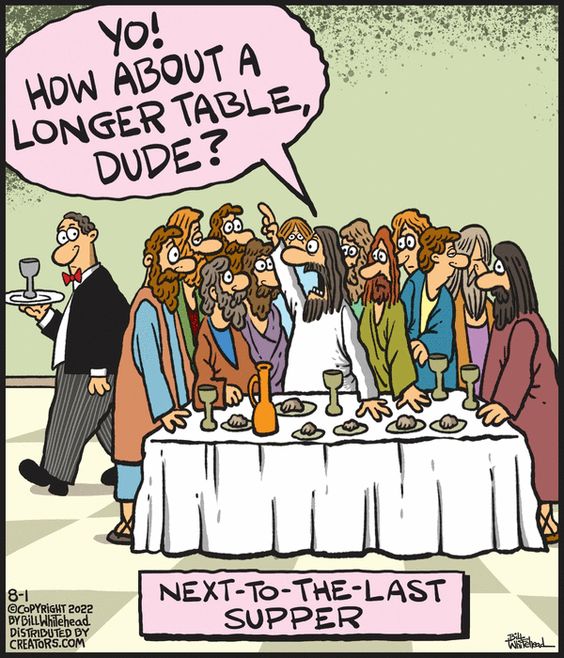
In this Free Range comic, we see a scene that looks like a humorous take on the famous painting of “The Last Supper.” One of the people at the table is saying, “Yo! How about a longer table, dude?” This is funny because in the original painting, everyone is sitting on one side of the table, which is not how people usually sit when they eat together. They look cramped and squeezed together. The caption “Next-to-the-Last Supper” is a playful twist on “The Last Supper,” suggesting that this is not the final meal but the one before it. The humor comes from imagining this historic and solemn event as a casual, everyday dining situation where someone would ask for a bigger table to have more space. It’s typical of Free Range comics to put a modern spin on classic scenes.
#11

#12

#13

#14

#15

#16

#17

#18

#19

#20

#21



